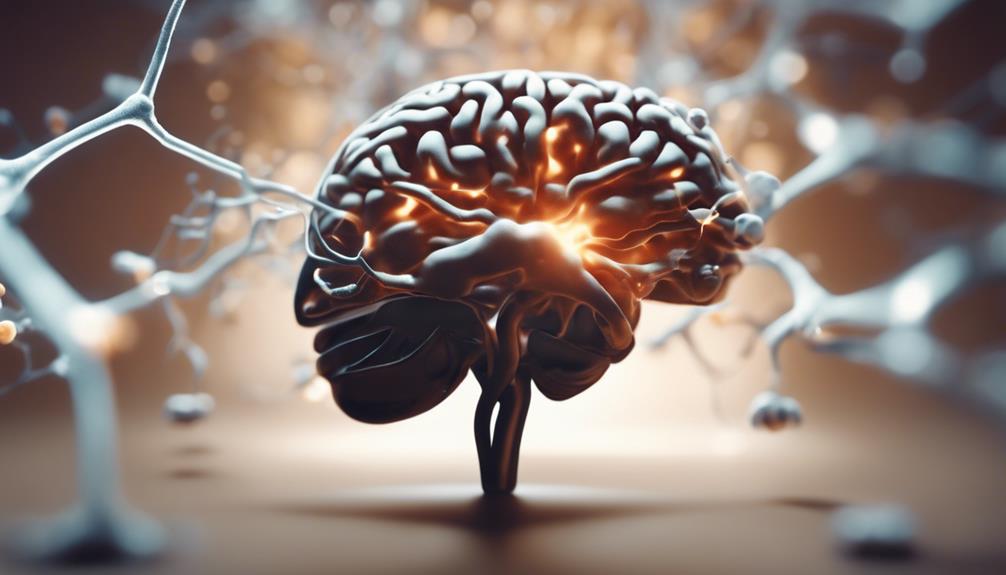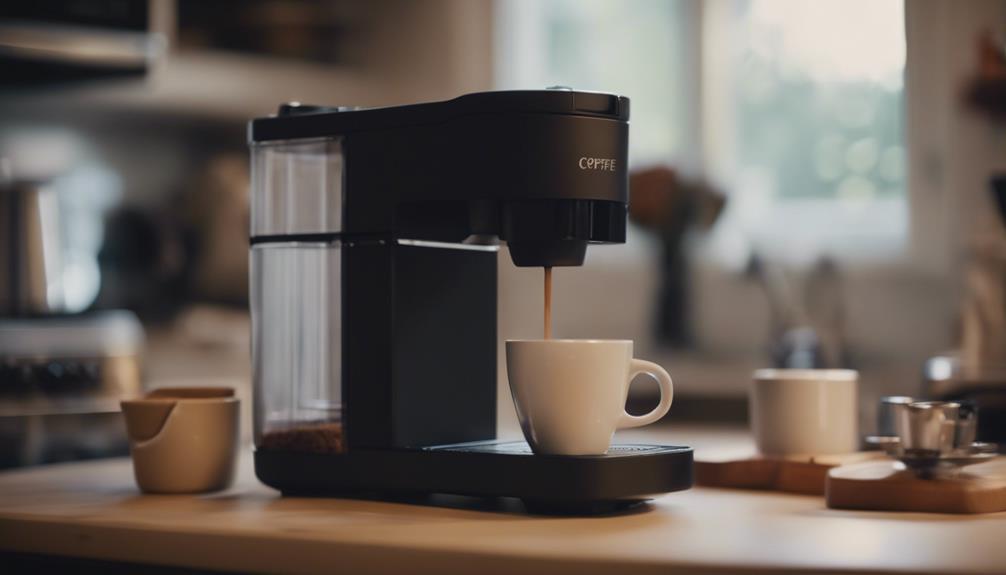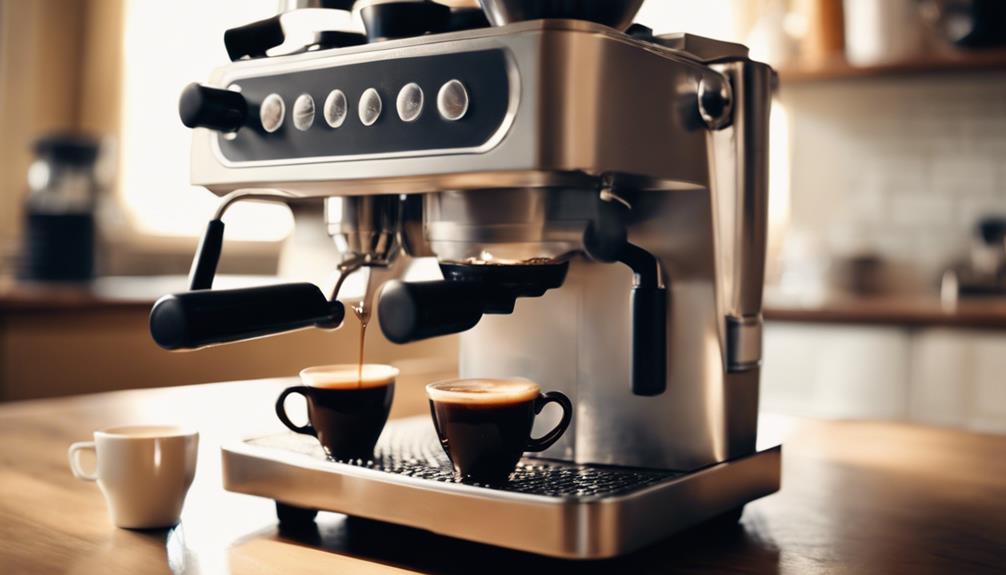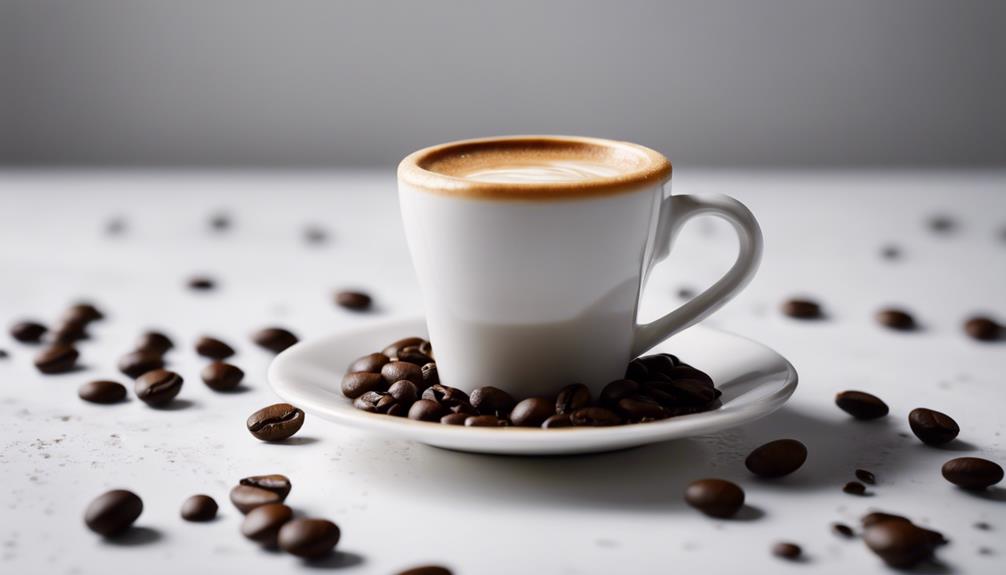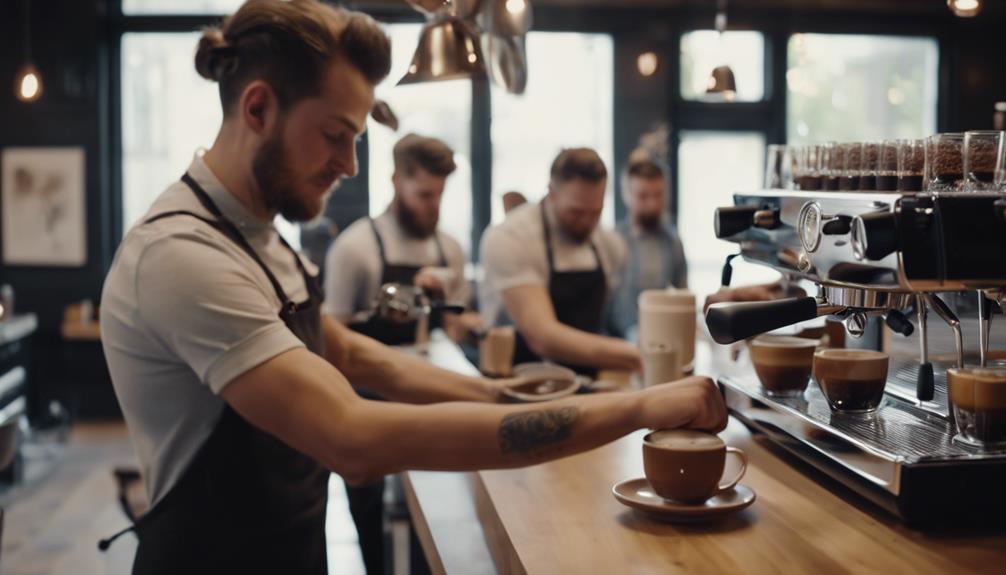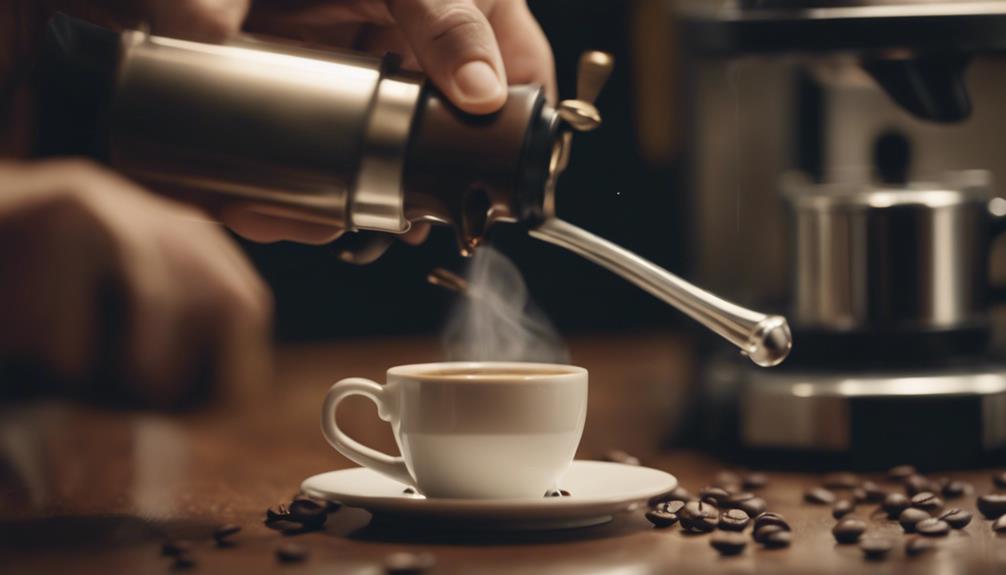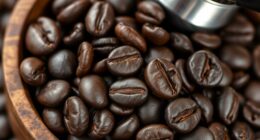Espresso provides numerous advantages for your body. It improves cognitive function, boosts physical performance, helps with weight management, fights inflammation, protects against diseases, reduces the risk of stroke, aids in preventing diabetes, enhances mood, and promotes digestive health. These benefits make espresso a versatile and beneficial addition to your daily routine.
Key Takeaways
- Boosts cognitive function and memory retention.
- Enhances physical performance and energy levels.
- Supports weight management and exercise intensity.
- Reduces inflammation and promotes overall health.
- Lowers stroke and diabetes risk while improving mood.
Boosts Cognitive Function
Drinking espresso can enhance your cognitive function by improving memory retention and recall. When you consume espresso, it kick starts dopamine production in your brain. This boost in dopamine levels helps increase your concentration and focus, making it easier for you to retain and recall information.
The caffeine present in espresso plays a vital role in aiding better information processing and enhancing your cognitive abilities.
Before exams, sipping on espresso can be particularly advantageous. The dopamine release triggered by espresso consumption supports improved cognitive function, which is essential for acing your exams. By drinking espresso before studying or taking tests, you can enhance your memory retention, stay mentally alert, and improve your overall cognitive performance.
In essence, incorporating espresso into your routine can positively impact your cognitive function, making it a valuable tool for boosting concentration, focus, memory retention, recall, and overall cognitive abilities.
Supports Physical Performance

Espresso can notably increase your energy levels, giving you a boost in strength and speed for physical activities. This enhanced endurance capacity allows you to push through workouts with improved efficiency.
Additionally, espresso helps sharpen your focus and alertness, contributing to better overall physical performance.
Boosts Energy Levels
Boosting energy levels, espresso supports physical performance by enhancing strength, speed, and endurance during activities. When you consume espresso, it triggers an increase in adrenaline production in your body, which leads to a surge in energy. This energy boost not only makes you feel more alert but also enhances your physical capabilities.
By drinking espresso before workouts, you can expect your exercise sessions to be more efficient and effective. The heightened energy levels from espresso play an essential role in combatting exhaustion and fatigue, allowing you to push through challenging workouts. This increased endurance can support prolonged physical activity, enabling you to perform at your best for longer durations.
Enhances Endurance Capacity
To enhance your endurance capacity and support your physical performance, consider the impact of espresso on your energy levels and workout effectiveness.
Espresso kick starts your endurance capacity by providing a physical energy boost that can greatly improve your physical endurance. The caffeine aid in espresso also helps in increasing exercise intensity, leading to better athletic performance and stamina improvement.
When you consume espresso before your workout, it can boost energy levels, enhancing your overall workout effectiveness. This boost in energy can help you push through tough workout sessions and improve your physical performance over time.
Improves Focus and Alertness
Improving focus and alertness can greatly support your physical performance during activities like workouts or sports. Espresso plays an essential role in enhancing these aspects by jumpstarting dopamine production in the brain.
When you drink espresso before engaging in physical activity, it not only boosts your energy levels but also sharpens your concentration on tasks at hand. The increased adrenaline levels due to espresso consumption lead to enhanced strength and speed during your workouts, ultimately contributing to better physical performance.
By incorporating espresso into your routine, you can experience improved efficiency and endurance during exercise sessions. This heightened focus and alertness provided by espresso can have a significant impact on your workout results and overall athletic performance, making it a valuable addition to your pre-workout regimen.
Enhances Weight Management

Espresso can play a significant role in enhancing weight management efforts due to its low-calorie content and performance-boosting effects. When it comes to weight loss, espresso helps by reducing calories while providing an energy boost that can increase exercise intensity.
By drinking espresso before workouts, you can improve stamina, making your physical activities more effective for fitness and weight management. This energy jolt not only helps you push through workouts but also aids in reducing muscle soreness post-exercise, allowing for quicker recovery and more consistent training sessions.
The combination of reduced calorie intake, enhanced exercise performance, and improved recovery from espresso consumption supports weight loss goals. So, next time you're looking to boost your fitness journey, consider incorporating espresso into your routine to help you achieve better results in managing your weight and overall fitness levels.
Fights Inflammation
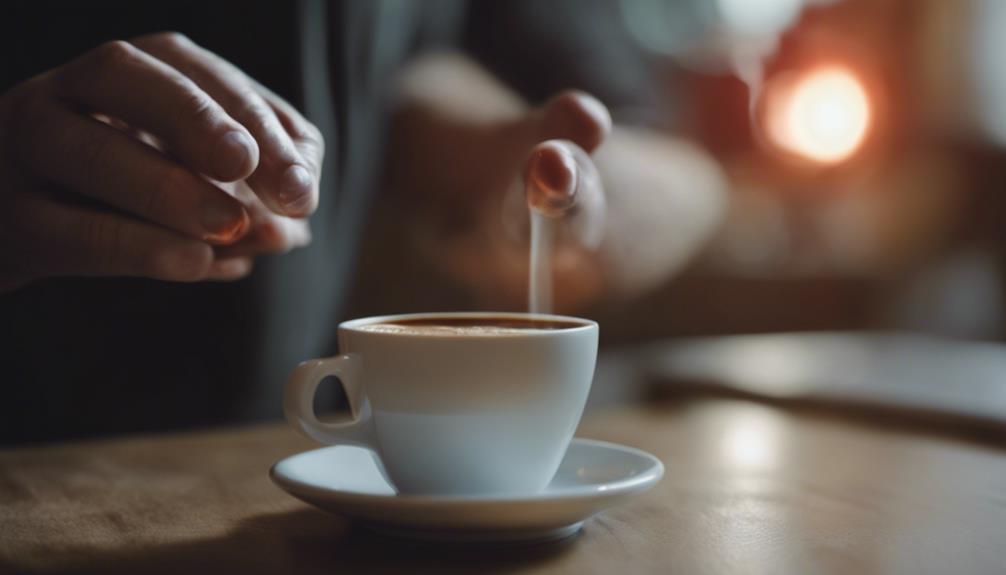
Enhancing weight management through espresso consumption can also be attributed to its ability to fight inflammation in the body. Espresso contains beneficial anti-inflammatory compounds such as cafestol and polyphenols, which work to reduce inflammation within your body. By regularly enjoying espresso, you may experience lower levels of inflammation, potentially leading to improved overall health and wellness.
Including espresso as part of a balanced diet can support your body's inflammatory response, helping to combat inflammation that may contribute to various health issues. The anti-inflammatory properties found in espresso can play a role in promoting a healthier inflammatory balance within your body. This can be particularly advantageous for individuals looking to maintain a well-rounded approach to their health and well-being.
Incorporating espresso into your routine, alongside other healthy lifestyle choices, can aid in managing inflammation and fostering a more balanced internal environment.
Protects Against Diseases
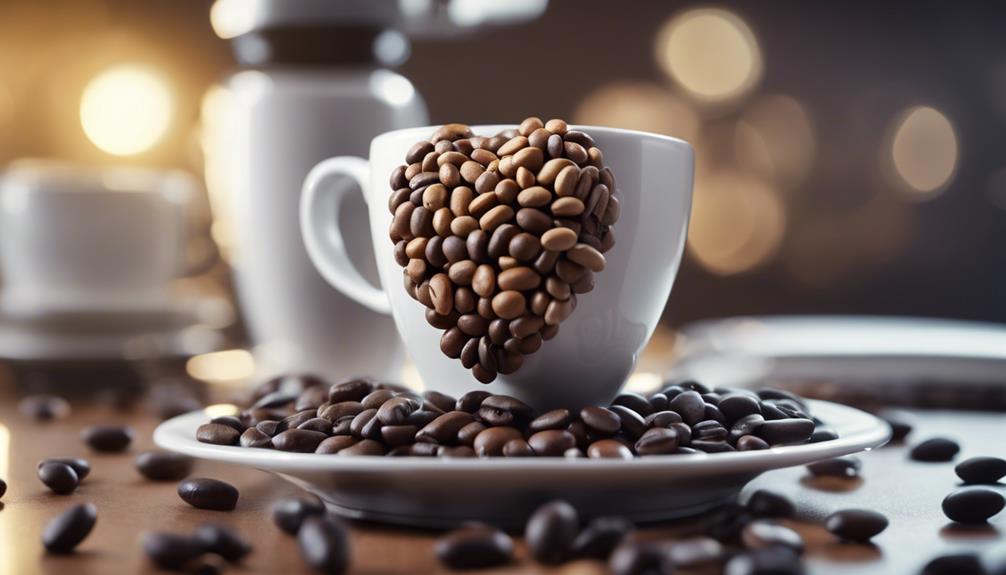
Espresso contains antioxidants like polyphenols and cafestol that help protect your body against diseases. These compounds work to neutralize harmful free radicals, reducing the risk of illnesses related to oxidative stress.
Disease-Fighting Antioxidants
Rich in disease-fighting antioxidants, espresso provides a powerful defense against various illnesses and health concerns. When you enjoy a shot of espresso, you're not just getting a caffeine boost; you're also benefiting from its rich array of antioxidants. Here's how espresso's disease-fighting antioxidants can help protect your body:
- Polyphenols and Hydrocinnamic Acids: Espresso contains these powerful antioxidants that combat harmful free radicals.
- Anti-inflammatory Properties: Compounds like cafestol in espresso help reduce inflammation and fight oxidative stress.
- Concentrated Dose: By consuming espresso, you get a concentrated dose of antioxidants in a single serving.
- Neutralizing Free Radicals: The antioxidants in espresso work to neutralize free radicals, shielding your body from environmental damage.
- Supporting Overall Health: Regularly drinking espresso can boost your body's defense mechanisms, aiding in disease prevention and promoting overall wellness.
Make espresso a part of your routine to harness these disease-fighting benefits and bolster your health defenses.
Lower Risk of Illnesses
In addition, boosting your body's defense mechanisms, regular espresso consumption can play a significant role in lowering your risk of various illnesses and diseases.
Espresso's antioxidant content is particularly beneficial in reducing the likelihood of developing type 2 diabetes. These antioxidants combat oxidative stress and inflammation, shielding your body from chronic illnesses. The polyphenols and anti-inflammatory compounds found in espresso offer concentrated health advantages, protecting you against a range of ailments.
Additionally, drinking espresso has been linked to a decreased risk of stroke, with a more pronounced effect observed in women. By promoting cardiovascular health and overall well-being, espresso serves as a potent ally in fortifying your body's defenses.
Consider incorporating this flavorful beverage into your daily routine to harness its protective properties and safeguard your health effectively.
Reduces Stroke Risk

Lowering your risk of stroke can be achieved through regular consumption of espresso. Drinking espresso reduces the risk of stroke, especially in women, as it supports cardiovascular health and improves blood circulation.
Moderation in espresso intake is key, as higher espresso consumption is linked to a lower likelihood of stroke occurrence. Enjoying espresso in moderation can help protect against strokes, offering stroke prevention benefits that contribute to overall well-being.
Aids in Diabetes Prevention
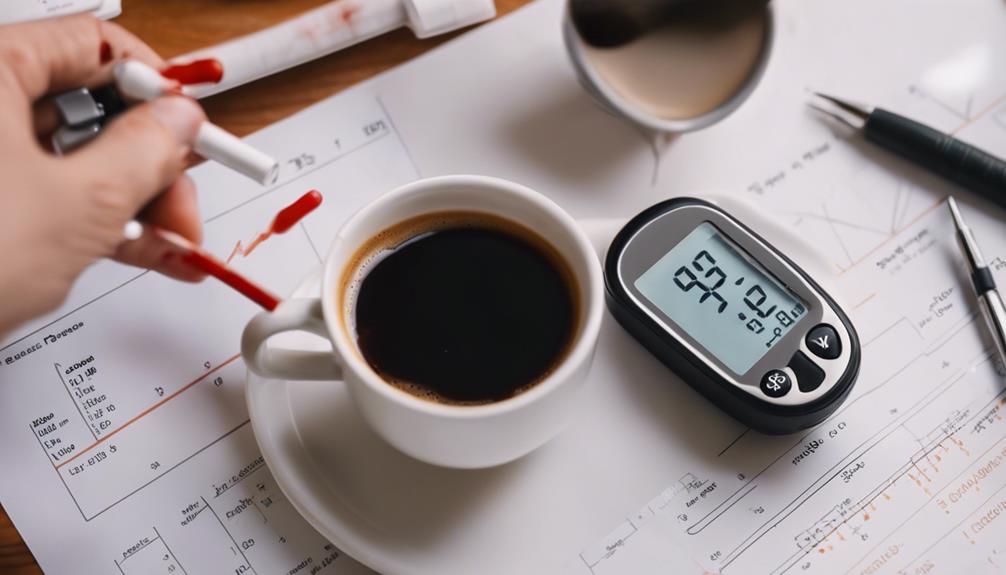
Shifting focus to another health benefit, espresso consumption plays a significant role in aiding diabetes prevention by supporting blood sugar regulation and improving insulin sensitivity. Regular consumption of espresso can help manage blood sugar levels effectively, reducing the risk of developing type 2 diabetes. By promoting overall metabolic health, espresso acts as a vital measure against the onset of diabetes. Unlike sugary coffee options that can contribute to diabetes risk, espresso provides a healthier alternative that supports individuals in maintaining their blood sugar levels.
Espresso's impact on blood sugar regulation and insulin sensitivity is essential for diabetes prevention. The compounds in espresso help the body utilize insulin more effectively, leading to better control of blood sugar levels. So, incorporating espresso into your routine can be a proactive step in managing your metabolic health and reducing the likelihood of developing type 2 diabetes.
Improves Mood

Espresso's significant impact on mood is attributed to its ability to trigger dopamine release in the brain, enhancing feelings of happiness and well-being.
When you sip on that rich espresso, here's how it helps improve your mood:
- Dopamine Boost: Espresso triggers dopamine release, lifting your spirits.
- Caffeine Power: The caffeine in espresso acts as a stimulant, clearing cloudy moods.
- Uplifts Energy: Combat feelings of exhaustion with a shot of espresso to uplift your overall mood.
- Mental Well-Being: For individuals battling depression, espresso can enhance mental well-being.
- Sense of Well-Being: Overall, espresso plays a significant role in enhancing mood and promoting a sense of well-being.
Promotes Digestive Health
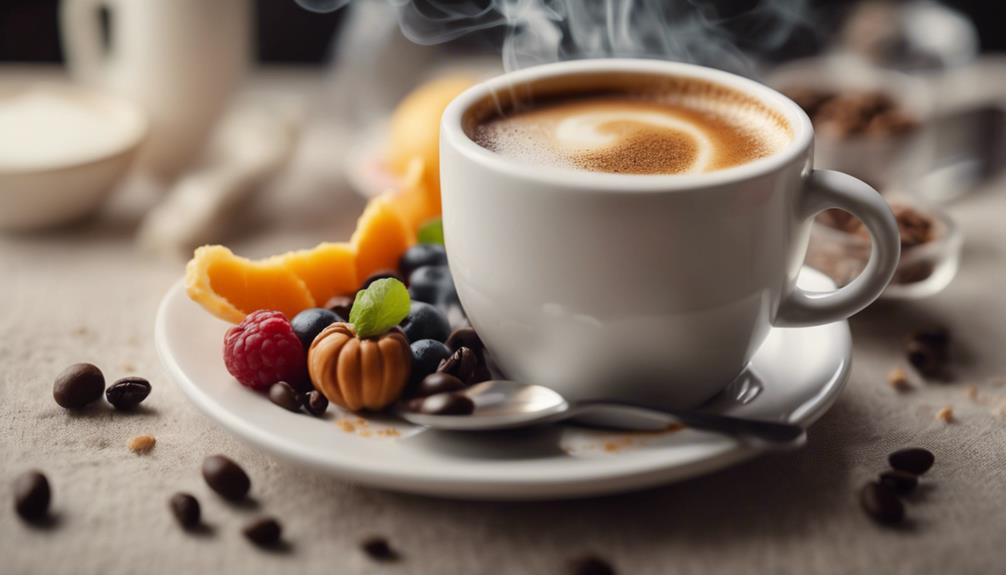
Enhance your digestive health with the support of espresso's stimulating properties that promote efficient digestion processes in your body. Espresso can aid digestion by stimulating the digestive system, helping to break down food effectively.
This stimulation can also promote regular bowel movements, supporting a healthy gut. The anti-inflammatory properties found in espresso may help ease digestion issues and reduce inflammation in the digestive tract.
Italians have a tradition of enjoying espresso after meals, not only for its rich flavor but also for its digestive benefits. Additionally, the energy-boosting effects of espresso can provide the motivation needed for physical activity, which further stimulates digestion and promotes overall digestive health.
Frequently Asked Questions
How Does Espresso Affect the Body?
Additionally, espresso affects your body positively in various ways. It boosts memory and recall by increasing dopamine levels.
The antioxidants in espresso fight oxidative stress, supporting overall health and immunity.
Before physical activity, espresso can enhance performance by boosting energy and endurance.
As a low-calorie option, espresso aids in weight management and can assist in weight loss efforts.
Furthermore, it reduces the risk of stroke and diabetes, promoting cardiovascular and metabolic health.
What Are the Benefits of Drinking Espresso?
Drinking espresso offers numerous benefits for your body and mind. Boosting memory and concentration, espresso aids in information retention and recall. Before exams, it can enhance memory retention and cognitive function.
By kick-starting dopamine production, espresso sharpens focus and attention. The release of dopamine also improves alertness and overall brain function.
Additionally, consuming espresso provides a quick energy boost, supporting productivity and mental clarity.
Is Espresso Good or Bad for You?
Espresso is generally good for you, offering health benefits like improved memory, concentration, and physical performance. Consumed in moderation, it can reduce the risk of stroke and type 2 diabetes.
Being a low-calorie option, espresso supports weight management and provides a guilt-free energy boost. The antioxidants in espresso combat oxidative stress, boost brain health, and enhance the immune system.
Prior to a workout, espresso can enhance physical performance, endurance, and energy levels.
Is Espresso Healthier Than Coffee?
Espresso is indeed healthier than regular coffee. With its concentrated form, espresso delivers a higher caffeine punch per ounce, making it a potent energy booster.
Plus, it's low in calories and free of added sugars or fats, making it a smart choice for health-conscious individuals. The antioxidant properties in espresso can also provide protective benefits against diseases and environmental factors.
How Does the Preparation of Espresso Affect Its Impact on the Body?
The preparation of espresso involves three parts of espresso, the grind size, water temperature, and pressure. These factors can greatly affect the impact of espresso on the body. Fine grind size and high pressure can result in a more concentrated and caffeine-rich brew, which may have a stronger effect on the body.
How Does Espresso Affect the Body’s Wakefulness and Alertness?
Espresso is known for its ability to increase wakefulness and alertness due to its high caffeine content. The concentrated shot of espresso can provide a quick energy boost, making it a popular choice for those looking to stay focused and alert. For more information on the effects of espresso on wakefulness and alertness, check out our espresso and wakefulness guide.
Conclusion
So, go ahead and enjoy your daily dose of espresso guilt-free! With its numerous health benefits, from boosting cognitive function to reducing stroke risk, espresso can be a great addition to your routine.
Just remember, moderation is key.
And hey, if nothing else, at least you'll be in a better mood!
